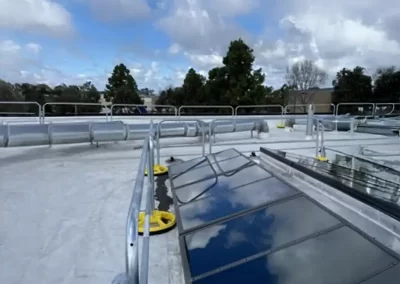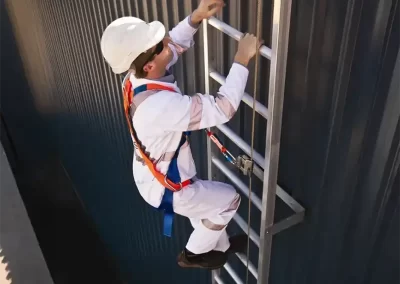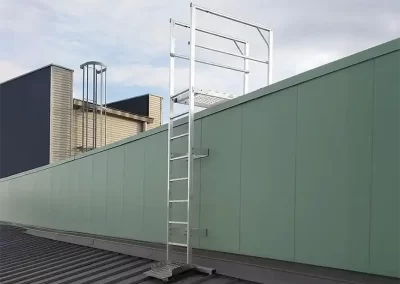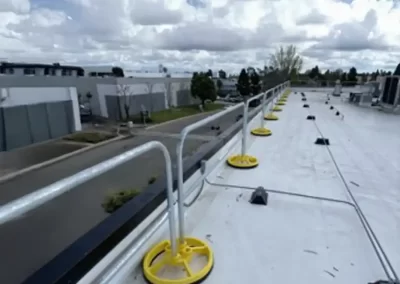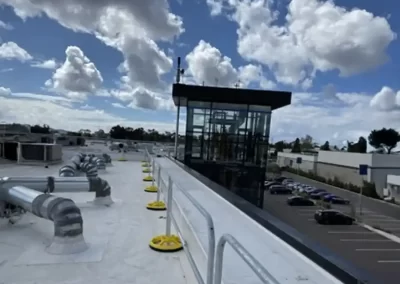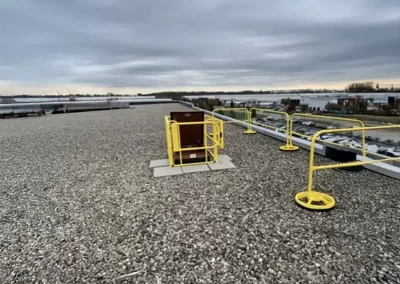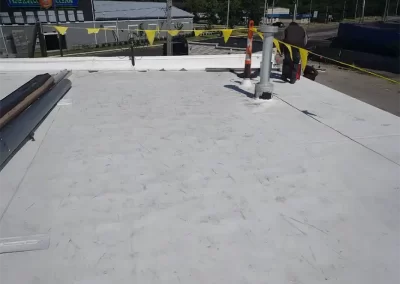
Fall Safety
Passive vs. Active Fall Protection
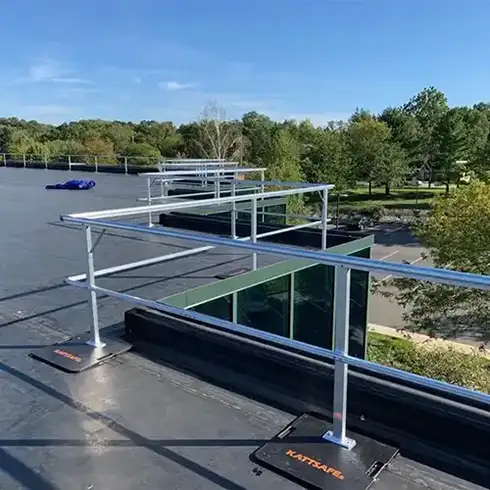
Passive Fall Protection
Passive fall protection is most closely aligned with the guardrail. Guardrail requires minimal inspection and virtually no training. Simply put, passive fall protection requires no action from the rooftop worker once the system is installed.
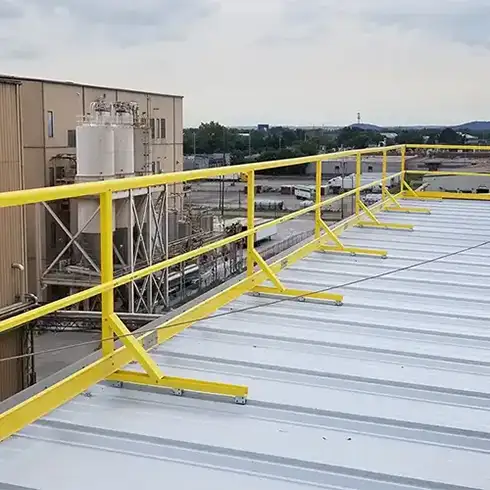
Active Fall Protection
Active fall protection is typically aligned with horizontal lifelines and anchor points. It requires training, maintenance, inspection, and on-going management. Most importantly, it requires action from the user each time it is used.
Types of Fall Safety Protection
The best example of a non-penetrating rooftop guardrail is the KeeGuard Safety Railing. It is a counter-balanced system that is easy to install and can be adapted to just about any rooftop obstacle. Easily assembled by a two-man crew, it can protect large sections of the roof perimeter or provide smaller sections of spot protection.
Non – Penetrating Rooftop Guardrails
Easy to install, NO specialized training required
Can easily be modified on site, no welding required
No ongoing maintenance or training required
Architectural “look and feel”
Versatile: Can build around obstacles
(ie. HVAC units & roofs with varying heights)
Durable: 100% galvanized system
Tested for OSHA compliance
Parapet Guardrails
Lower linear foot cost than a counter-balanced solution
Easy to install, attaches directly to the parapet, avoiding penetration of the roof membrane
No ongoing training required
Versatile: Can build around obstacles
(ie. HVAC units & roofs with varying heights)
Penetrations may need maintenance
Suitable parapet is required
Railing has to be placed on parapet, making more visible from below
Higher installation costs
Special labor is required in most cases for proper sealing of penetrations
Horizontal Lifeline
Lower cost of product than most guardrail solutions
Not visible from the ground
Can be used in some circumstances where passive solutions will not work
Allows more mobility around a roof than standard anchor points
Must be installed by certified installers
Ongoing maintenance
Inspection required before every use
OSHA competent person training required by all employees using the system
Requires the employee to wear fall protection equipment & properly tie off the system
Ongoing purchase of PPE
(harnesses, lanyards, etc.)
Requires valid rescue plan
Requires attention from management to document the above & validate that the safety plan is followed
Limits productivity to workers
CROWNWORX Non-Penetrating Tie-Off Anchor Points
Systems are portable and can be moved
Relatively low cost of entry
Not visible from the ground
No roof penetration
OSHA competent person training required by all employees using the system
Inspection required before every use
Requires the employee to wear fall protection equipment and properly tie off to the system
Allows limited access before needing to be repositioned
Ongoing purchase of PPE
(harnesses, lanyards, etc.)
Valid rescue plan required
Higher risk of incorrect use
Requires attention from management to document the above and validate that the safety plan is followed
Limits productivity to workers
Adds additional work time to each job for setting up and tearing down the anchor point
